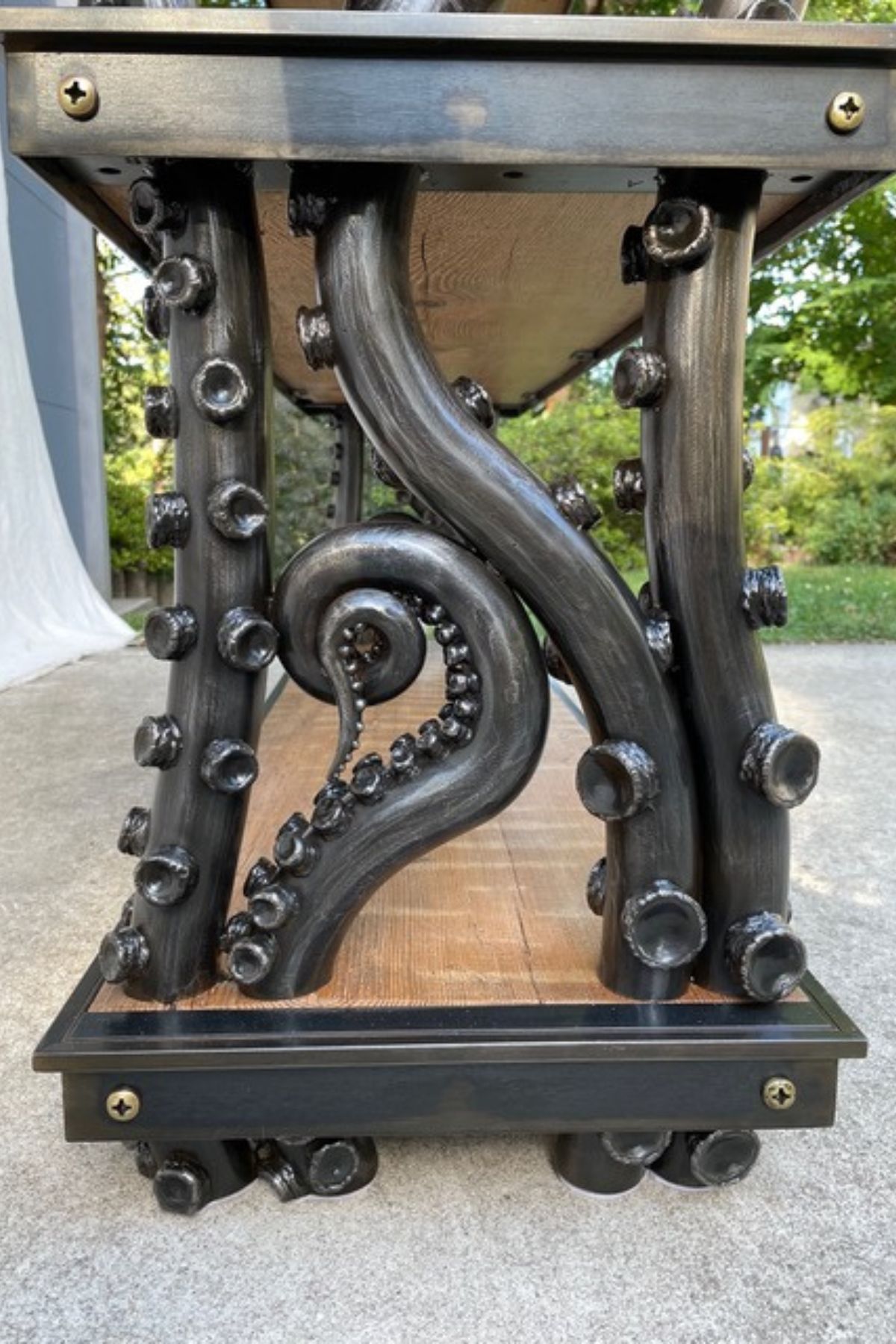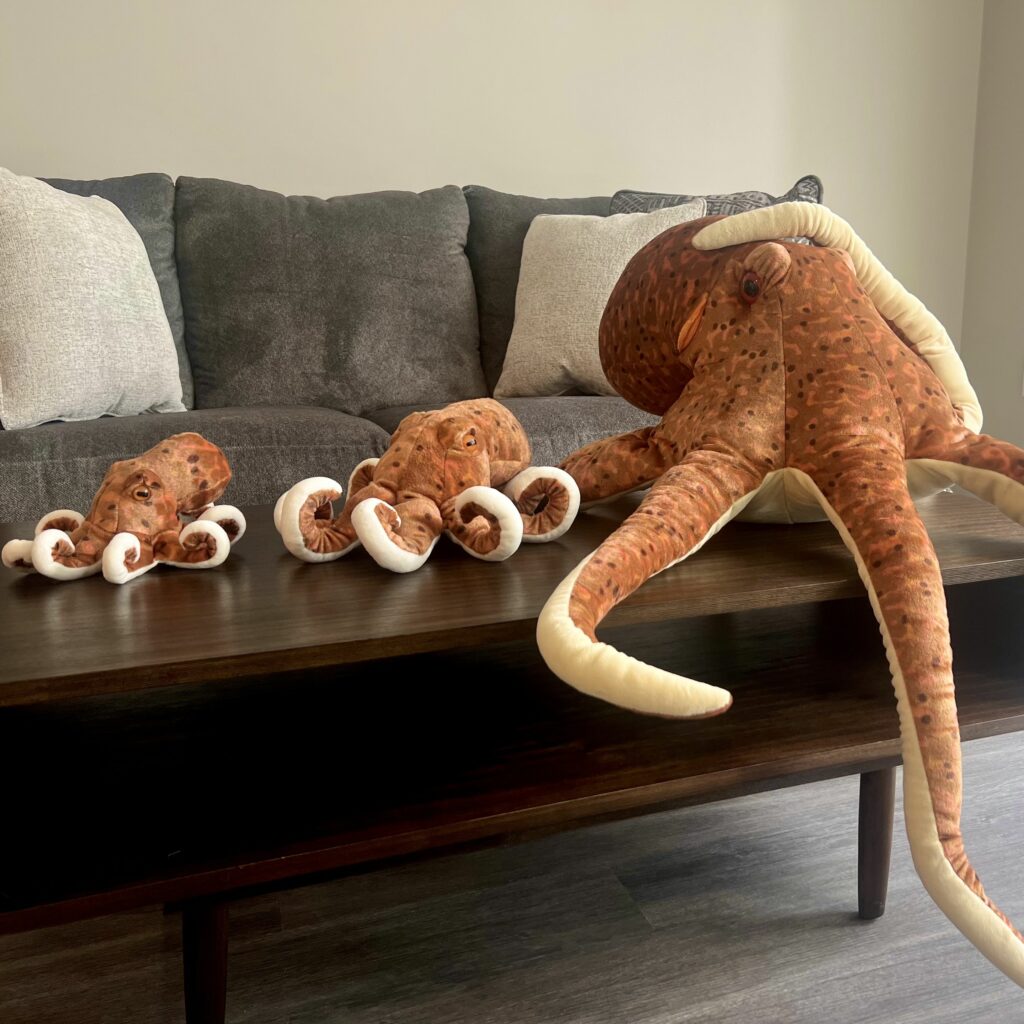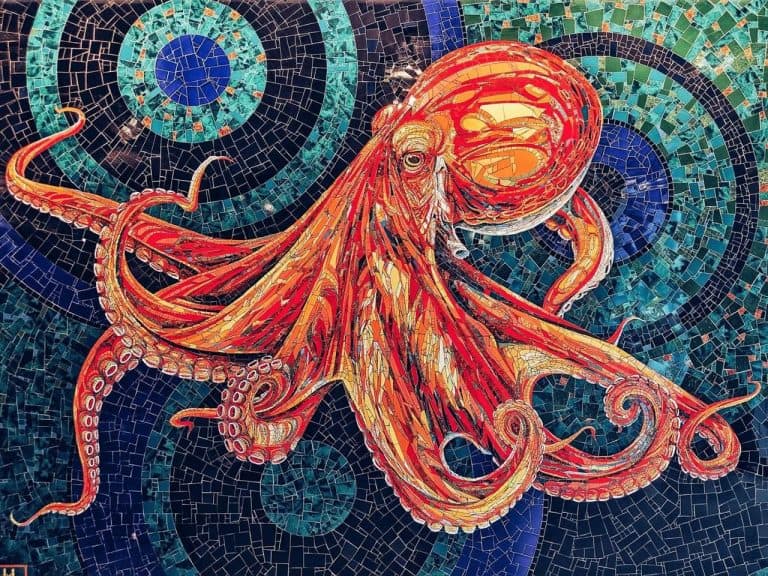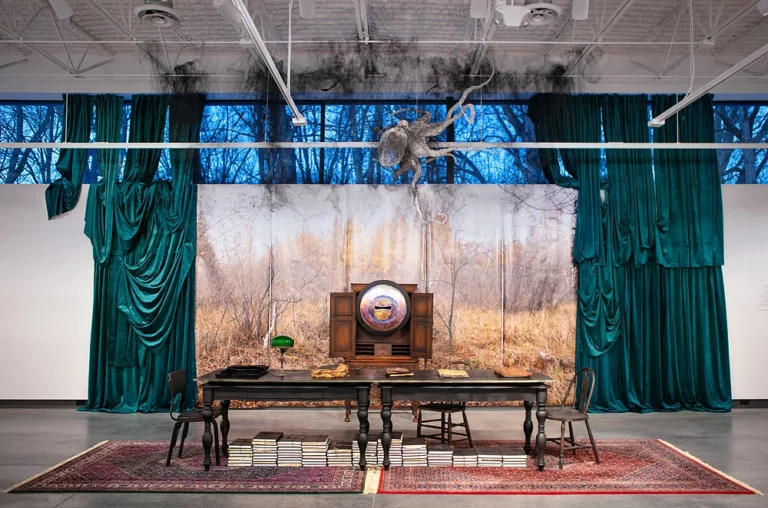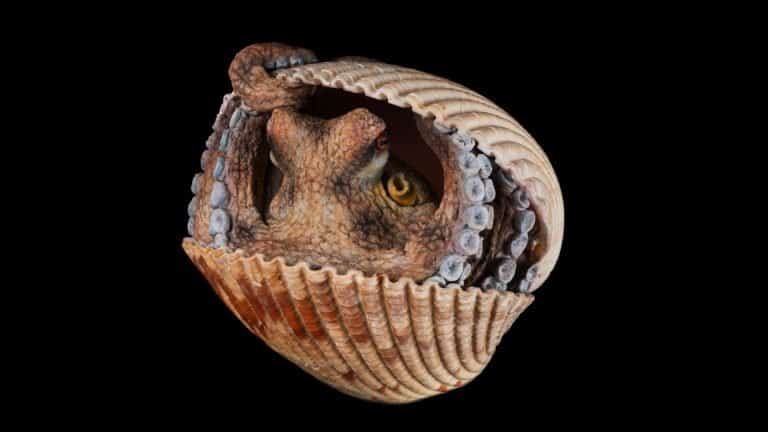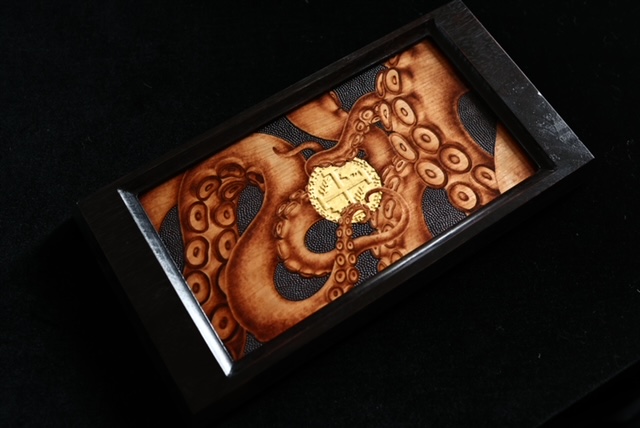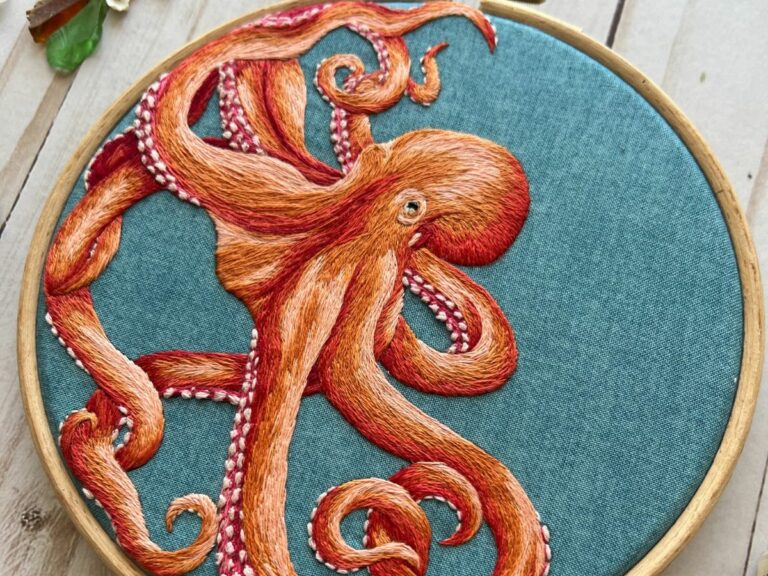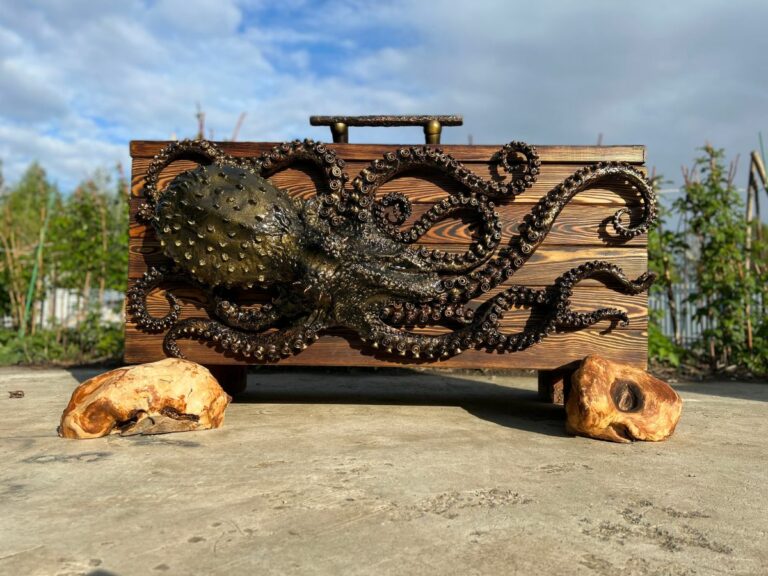‘Artist Spotlight’ Of The Week: Karl Saar
Howdy Nation! In today’s post, we are going to be featuring our ‘Artist Spotlight’ of the week: Karl Saar. He is the owner of Kustom Steeler, where he has used a multitude of skills to build and weld sculptures and furniture since the early 2000s. Today, we are showcasing ‘Kraken Shelves’, his latest octopus furniture piece!
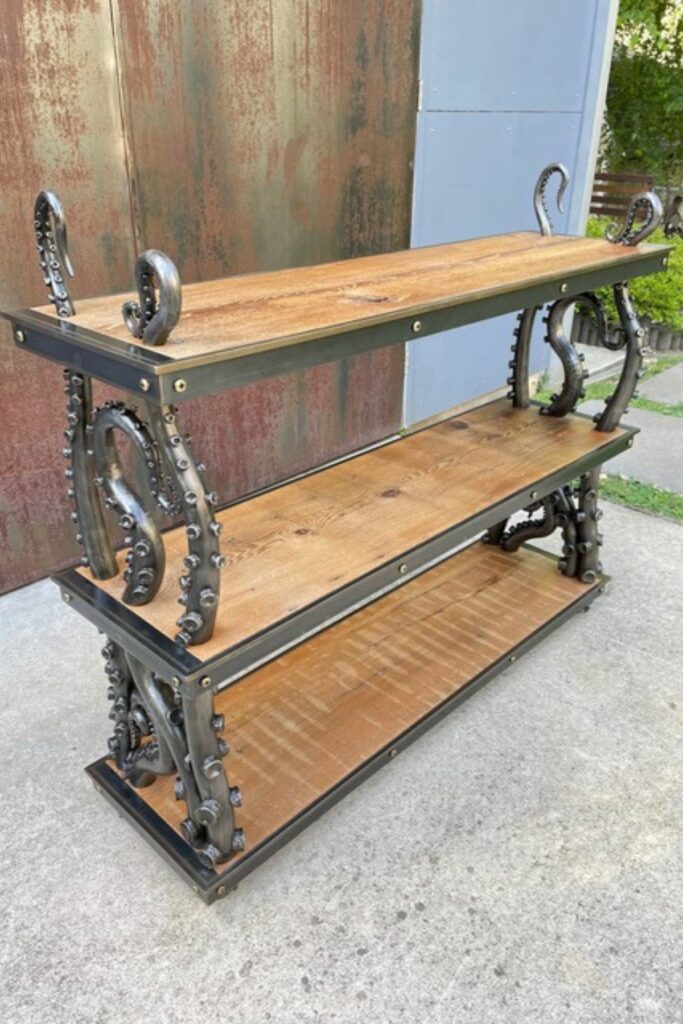
Meet Karl Saar!
Born in Scranton, PA, Karl always loved to draw, and after high school, attended Keystone Junior college, then Temple University’s Tyler School of Art to major in sculpture.
After college, he and his wife moved to Baltimore, Maryland, where he was employed by New Arts Foundry as a metal finisher for about seven years. Karl picked up a lot of welding and metal carving skills during that time at the foundry.
He started making metal furniture and sculpture after hours and started to commission pieces. So in 1999, he left the foundry and opened Kustom Steel in his little backyard garage, making sculptures and furniture.
His little one-man business is still in the backyard, but rebuilt the shop into a bit bigger two-story building with a wood shop and drawing studio/ office.
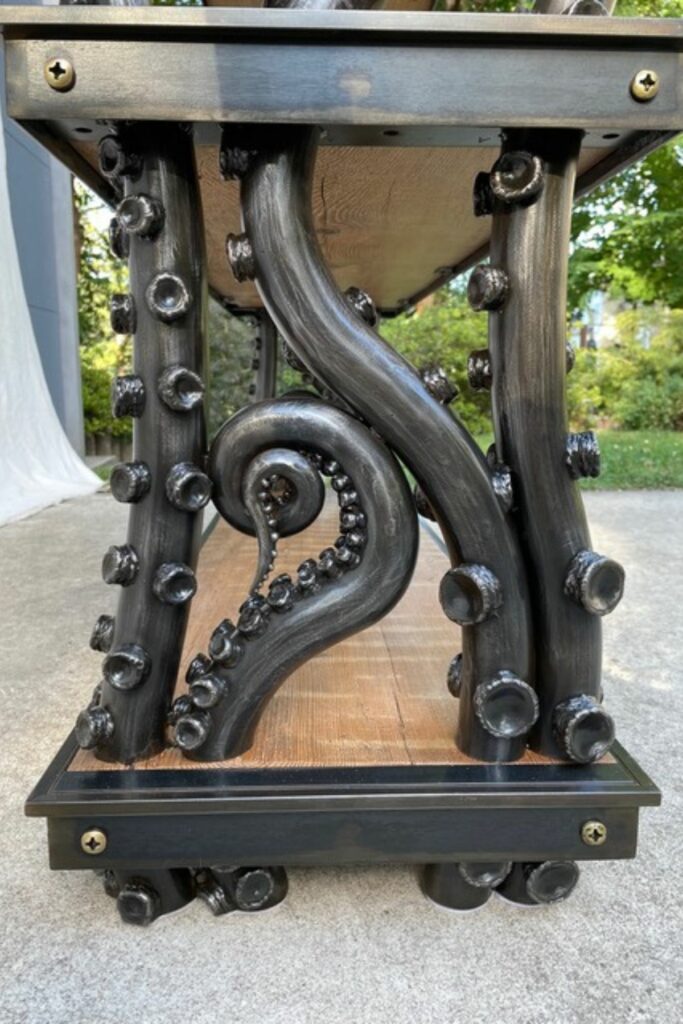
About this octopus furniture art piece
The piece we are showcasing is called the ‘Kraken Shelves‘.
One of his long-time clients contacted him about making a piece to house her art books and some collectibles/ small art pieces. Karl had already made various pieces of furniture in the room over the years, so he tried to come up with some options that related to the design elements he had incorporated into the other pieces.
Karl always tries to give a client three options, and I had two -but was stuck on a third. He remembered she had mentioned that she loved a little octopus soap dish he had made, so her crazy dream was to have an octopus theme (she lives on the water), but she thought it would be perhaps too much.
Karl loved the idea! He had never built octopus arms at this scale, so it was an interesting challenge. He drew it up, thinking she wouldn’t go for it as it was over budget. She loved the idea and said yes immediately, and that’s how this project was born!
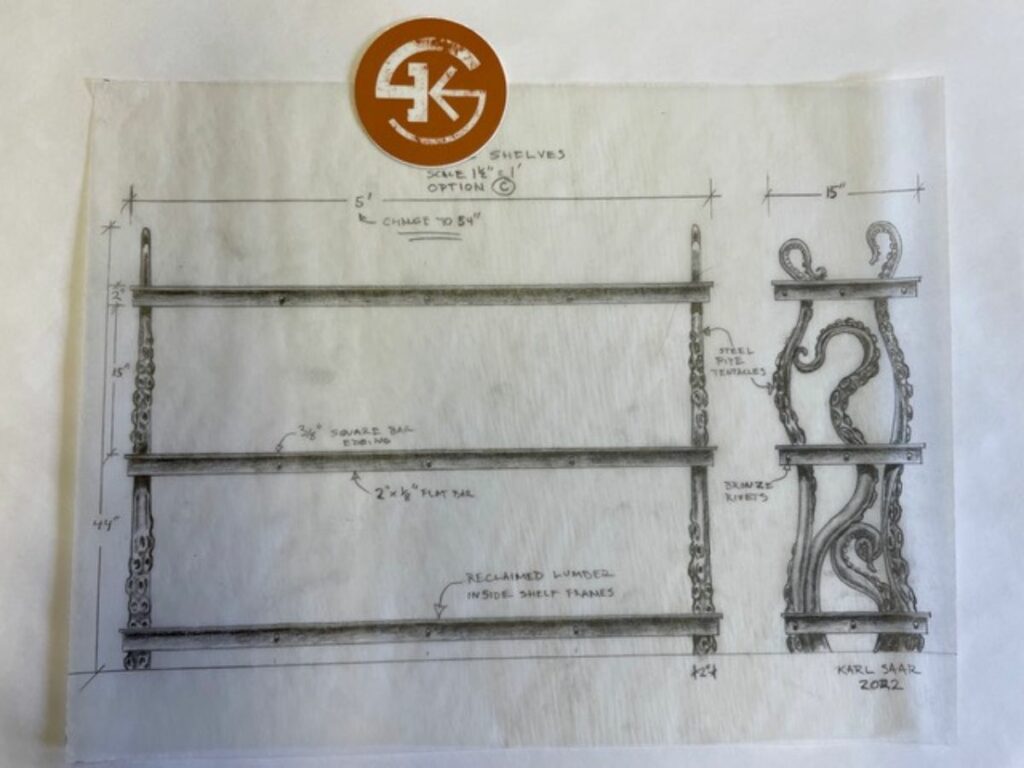
What draws you in or fascinates you the most about octopuses? When did this start for you?
“It’s all about those arms! I love the suckers, the way they can look soft but strong simultaneously. And the way the arms move- rolling over themselves, twisting, spiraling, snaking around whatever object they want to grab. Visually stunning material for an artist.
I remember having an aquarium when I was little, and my mom would take me to the pet store every so often for new fish, supplies, etc. One of my favorite things to look at were the bubblers, those little sculptures that would aerate the water and have some sort of kinetic action.
Skeletons, sunken ships and treasure chests all piqued my interest but the one I fell in love with was an old school diver in a life or death struggle with a beautiful, ferocious looking octopus. The octopus had the diver by the shin and was shaking him up and down with each cloud of bubbles released.
I think I looked at that struggle every day that I had that tank, and it must have imprinted in my subconscious.
Many years later I created a sculpture called “Differential Diver” which featured a diver helmet rising out of a cloud of bubbles with an octopus latching on and trying to figure out a way in- the struggle continues!”
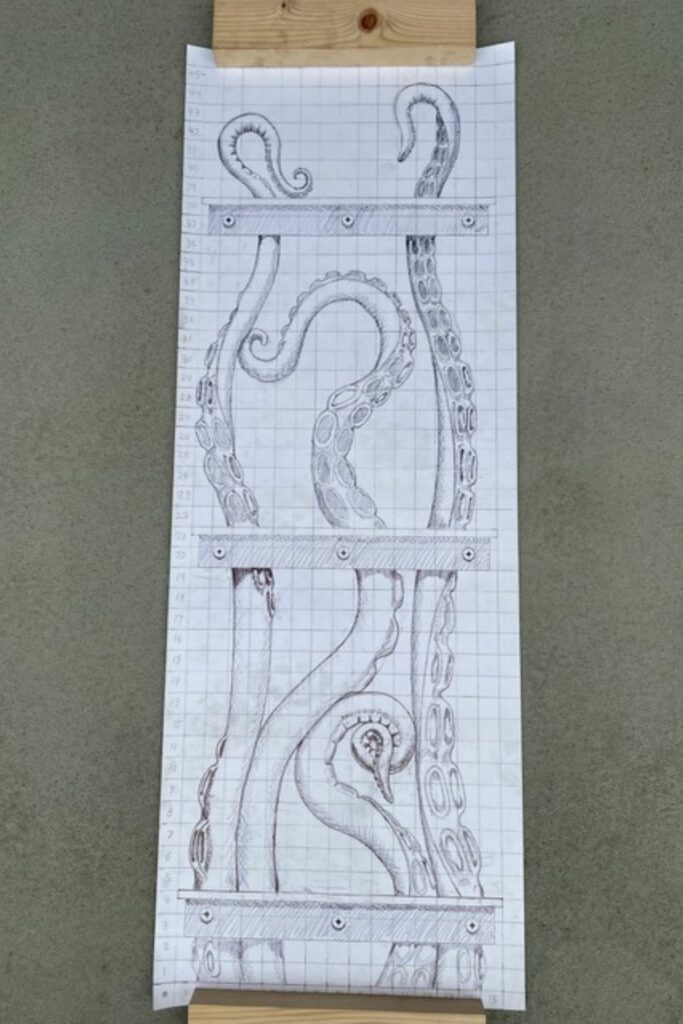
OctoNation members love knowing how long your work takes you to complete… Can you describe the process?
“Designing, drawing, and fabricating this piece took 230 hours total.
I originally was going to have full arms coming up from the floor and they would support the shelves from the outside edge. But my wife, a graphic designer with an incredible eye, suggested that the arms should appear to go through the planks of wood. While this added a substantial amount of time to the build, I’m so glad I did it – it really changes the dynamic of the piece!
So the process begins with enlarging the original concept sketch into a life size drawing that I can fit all the steel elements to. Once that is complete, I now can get accurate measurements of how much material I’ll need to make the legs. And that material is humble old steel pipe.
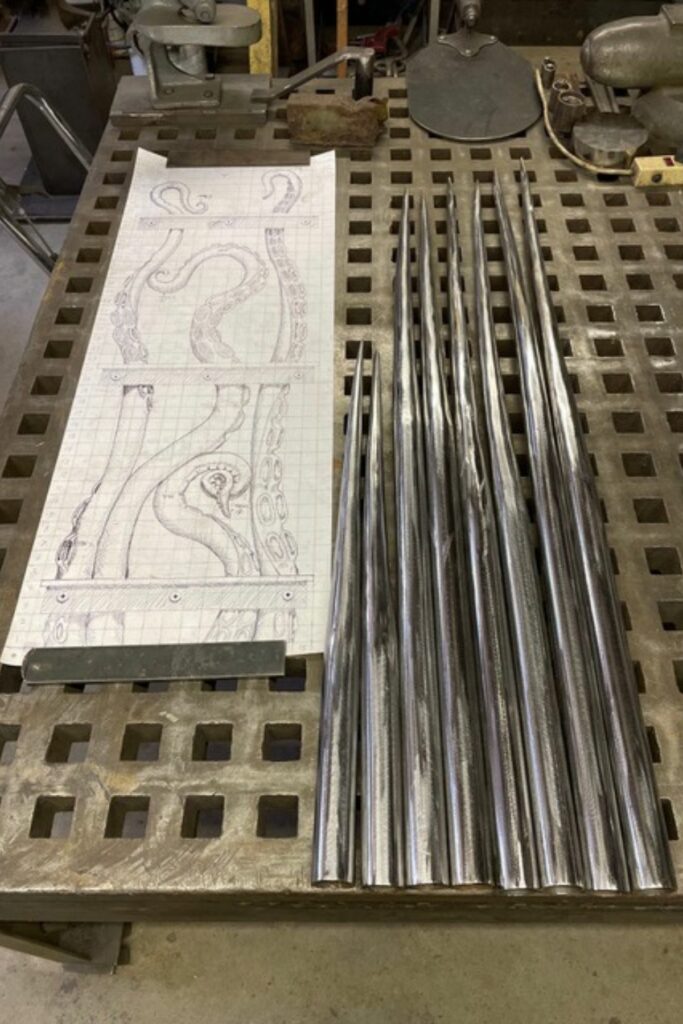
I used pipe that was just about 2 inches in diameter and had a wall thickness of 1/8 inch. I cut all my pipes to length then cut a long wedge out of each pipe. After I bend that space closed on my hydraulic press, I have a tapered pipe.
I forged a small length of 3/4 inch diameter solid bar down to a point, and weld that to the end, creating the thinner taper that I could form easier than pipe. Once that is done I can start the forming the arms!
I start at the tip of the arm, heat the bar, and bend it to match the drawing. There is a constant back and forth between the torch (to heat the metal so it becomes pliable), the water bucket (to quench the hot metal so I don’t burn the drawing), and to the drawing on the work table. This process continues until I reach the pipe, then I use a method called “kerf cutting”.
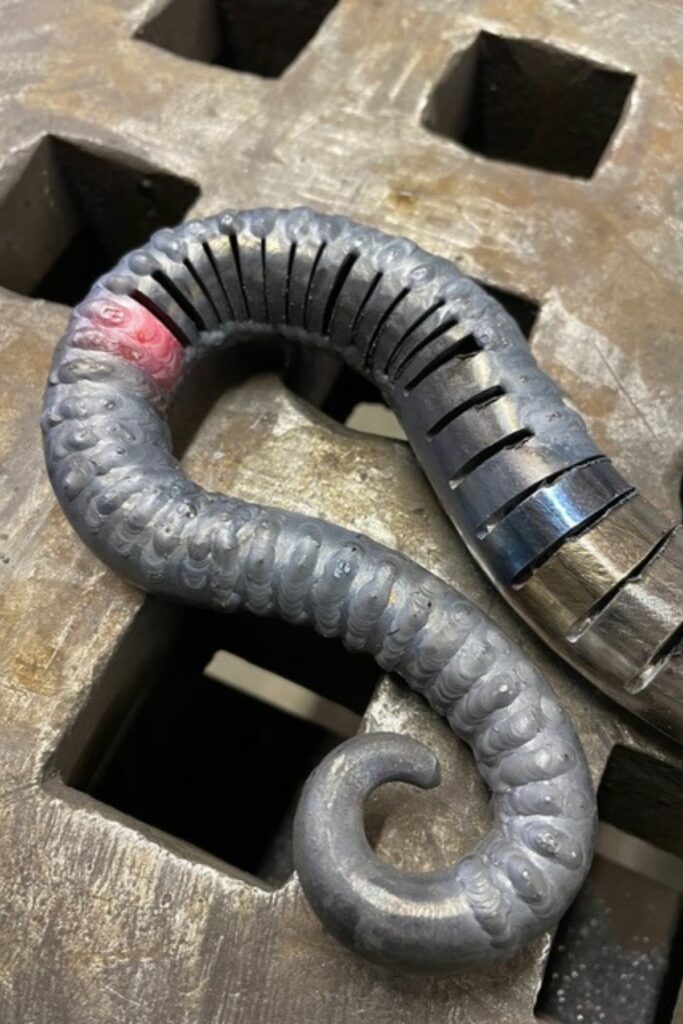
Using a grinder with a metal cutting disc, I make a series of cuts almost all the way through the pipe, but leaving a small section to act as a hinge. Then I pull on the pipe, closing all those cut gaps, or kerfs. This creates a nice, smooth bend in the pipe and then I weld all the cut areas closed.
That process takes a long time, and when finished I grind down all the welds and have a nice smooth surface for the next step, adding the suckers! I draw them on with a sharpie first to get them where I want, then an electric engraver is used to trace over the marker lines. This gives me a reference line the I can work to when welding.
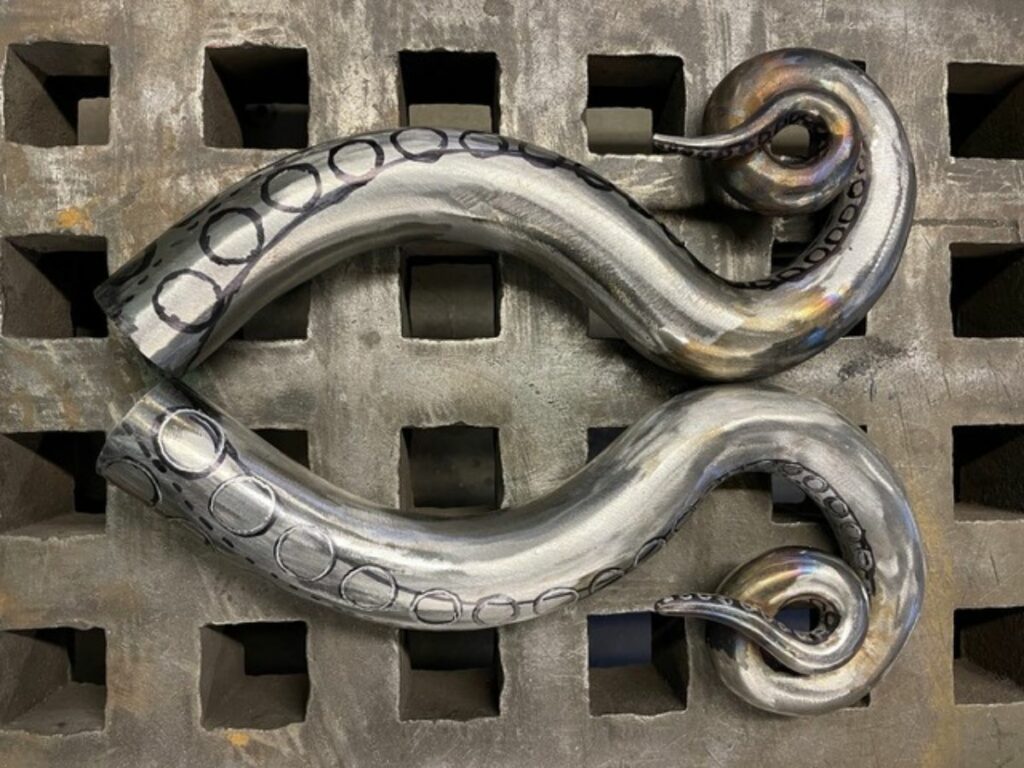
The suckers are built up kind of like making a clay coil pot. I keep going around in a circle, building up a wall. The layered welds create a cool looking sucker, and I finish them off by capping them with a thin piece of steel, and bending it in with a ball pein hammer to create the sucker look.
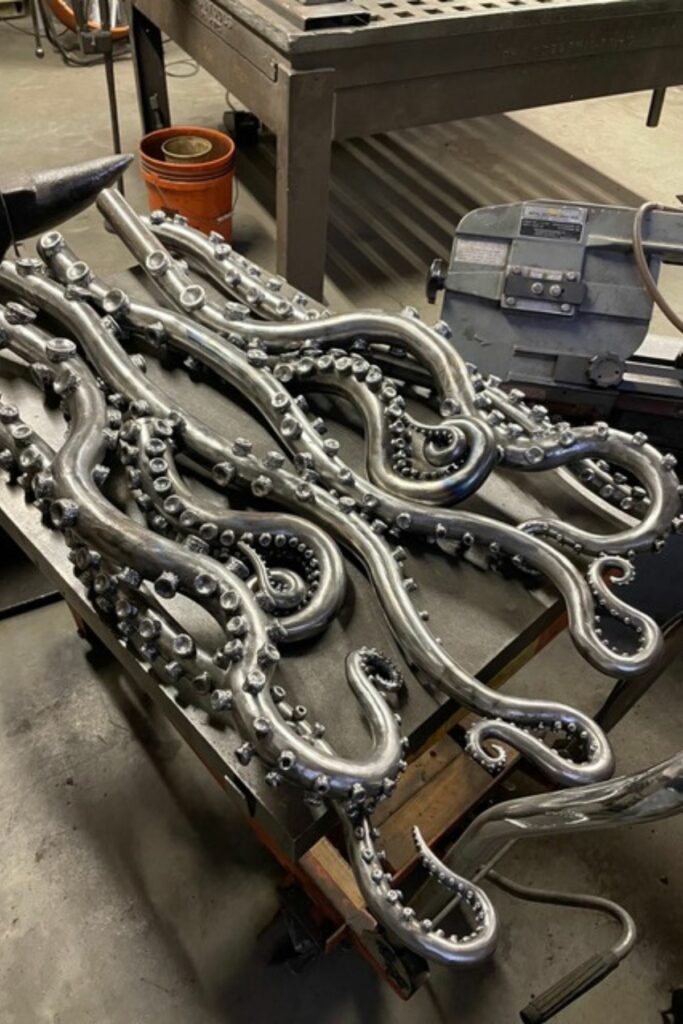
With all the arms created, I weld temporary bracing to them, and then cut out the areas where the shelve will be. I add the necessary hardware to be able to connect them to the top and bottom of each shelf.
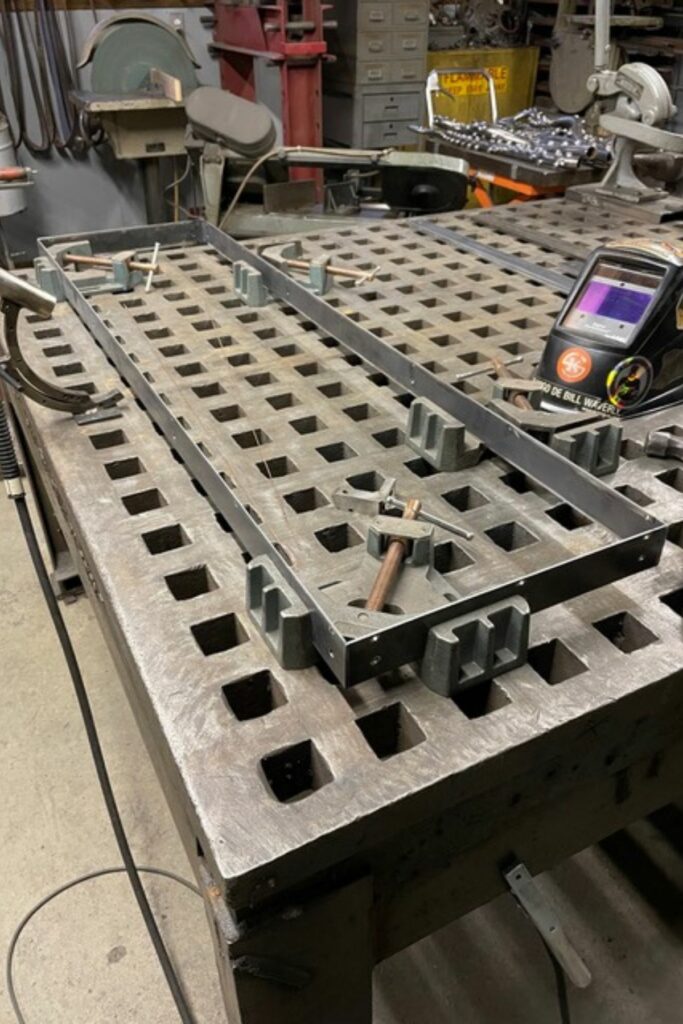
Then, I cut the slabs of reclaimed pine for each shelf, edged them in steel with brass screws to match an existing coffee table I had done, which would be nearby in the room.
Finally, apply patina to the metal and sealants to everything, then assemble all 160 pounds of it!”
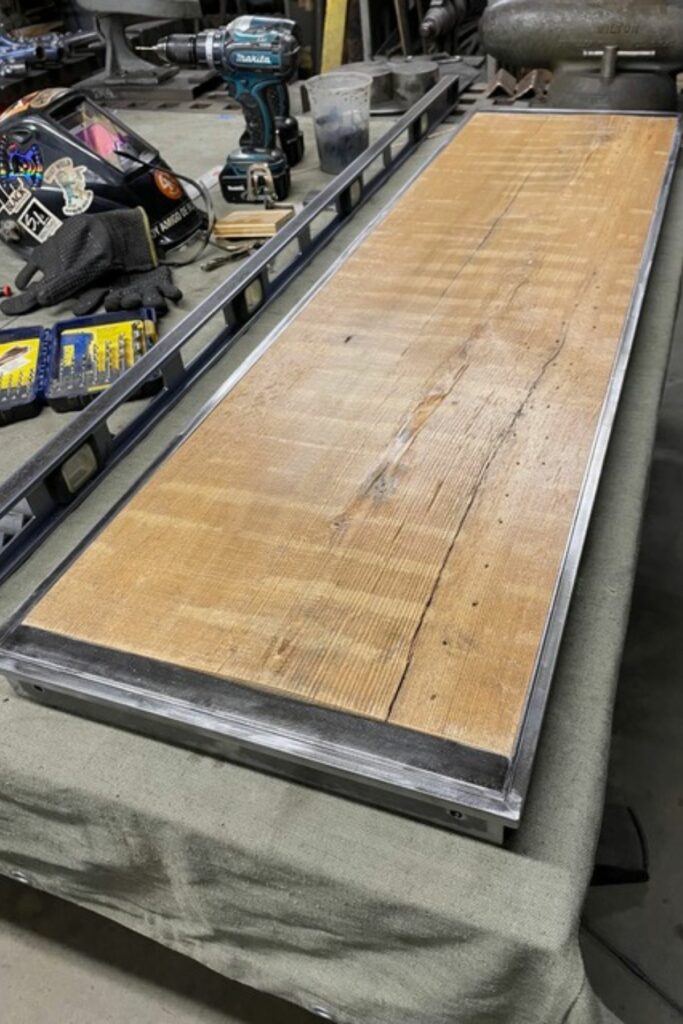
Was this modeled after a specific octopus species? Did you use any references?
“It wasn’t. I’ve sort of come up with a generic octopus arm that reads really well. I think it’s all about getting the proportions correct and making them look as fluid as they are in real life.”
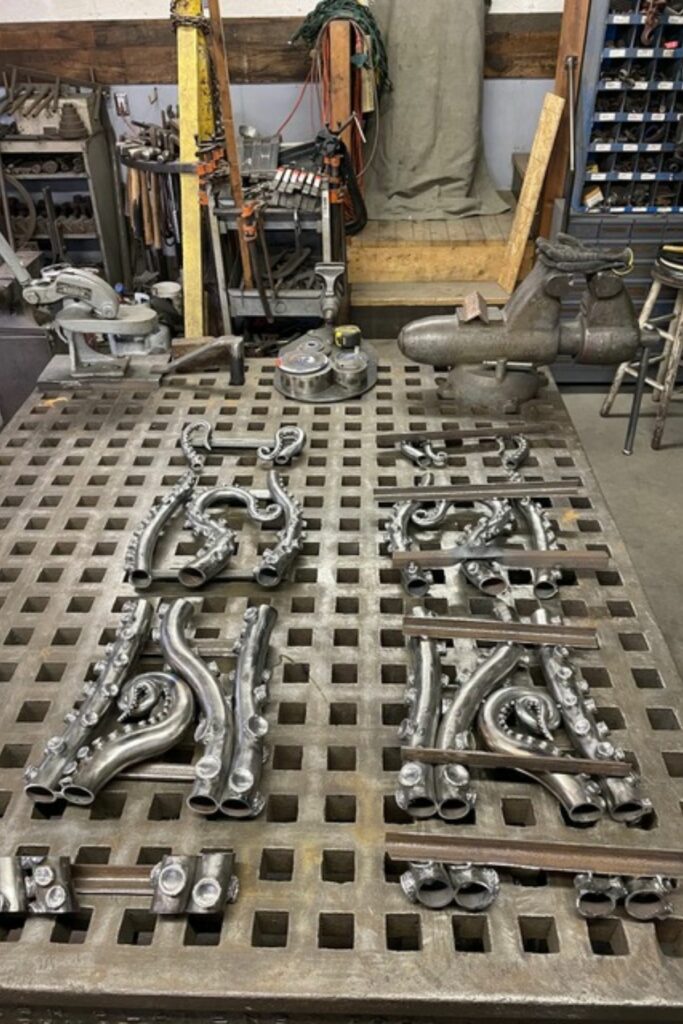
What materials were used?
“Steel, reclaimed pine (from the old farmhouse I grew up in!) and brass screws.”
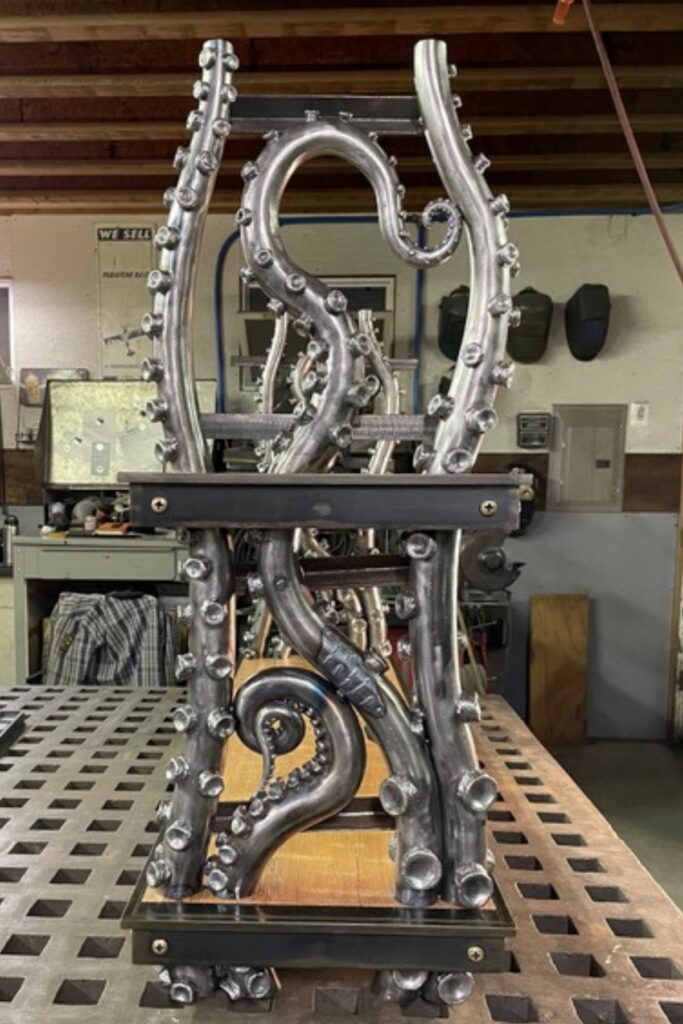
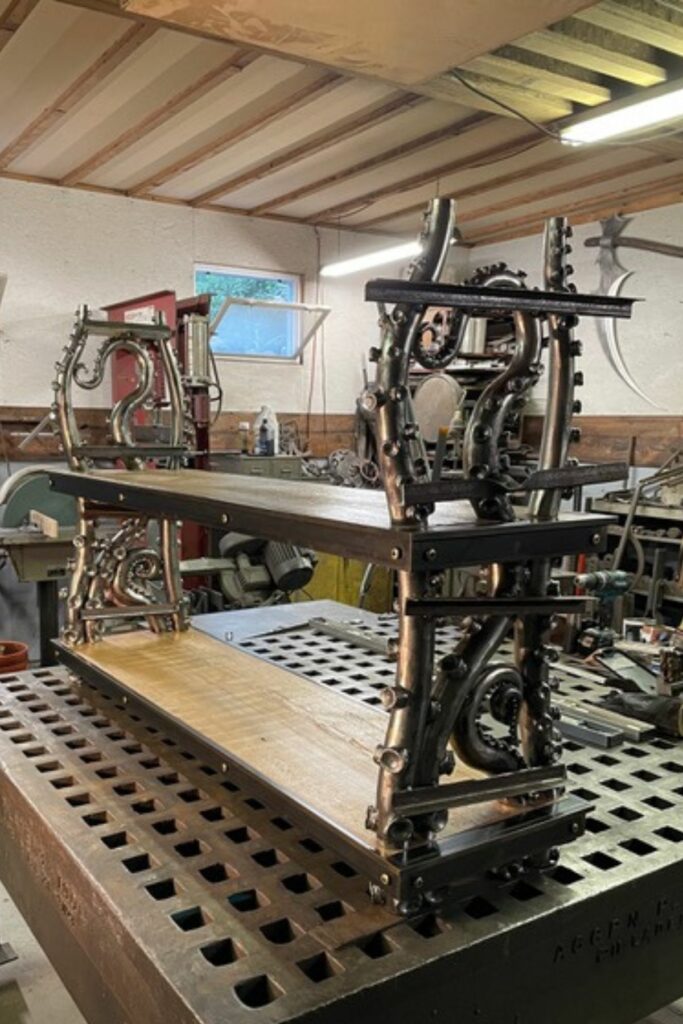
Who (or what) are your biggest influences?
“Comic books, fantasy art, album cover art. Anything in the lowbrow art world , and in nature. Even old masters, like Michelangelo and Rodin, to kustom kulture artists like Robert Williams and Ed Roth.
I have two really good friends that always spur something in my imagination and my wife Amy’s critiques and suggestions are invaluable!”
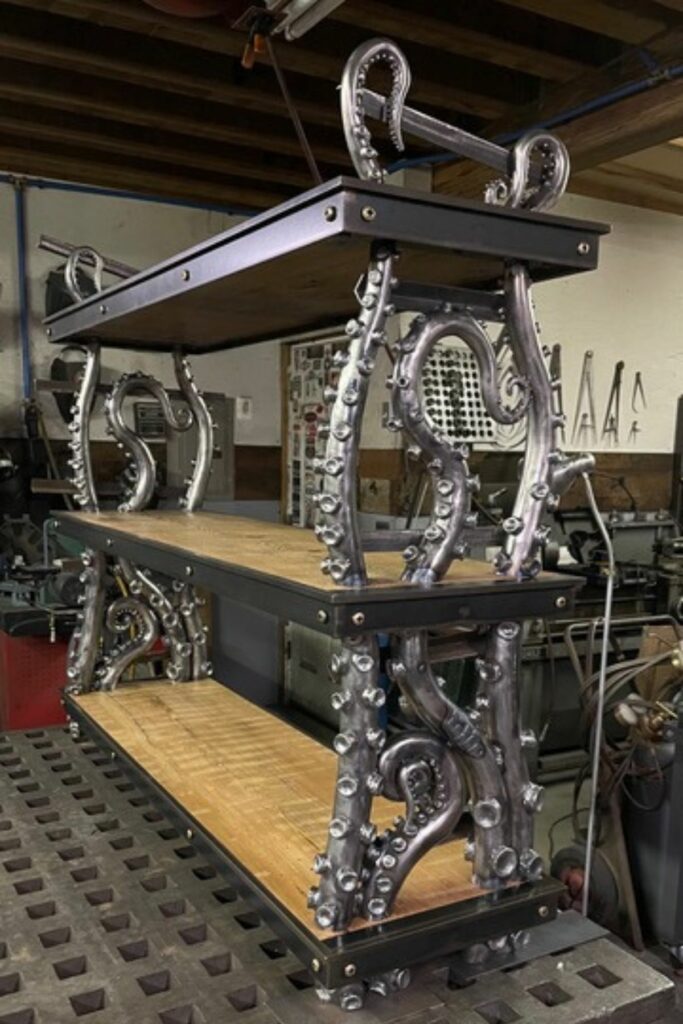
When do you feel the most creative?
“That is an absolute moving target. I can have an idea strike me while washing the dishes or in a dream…”
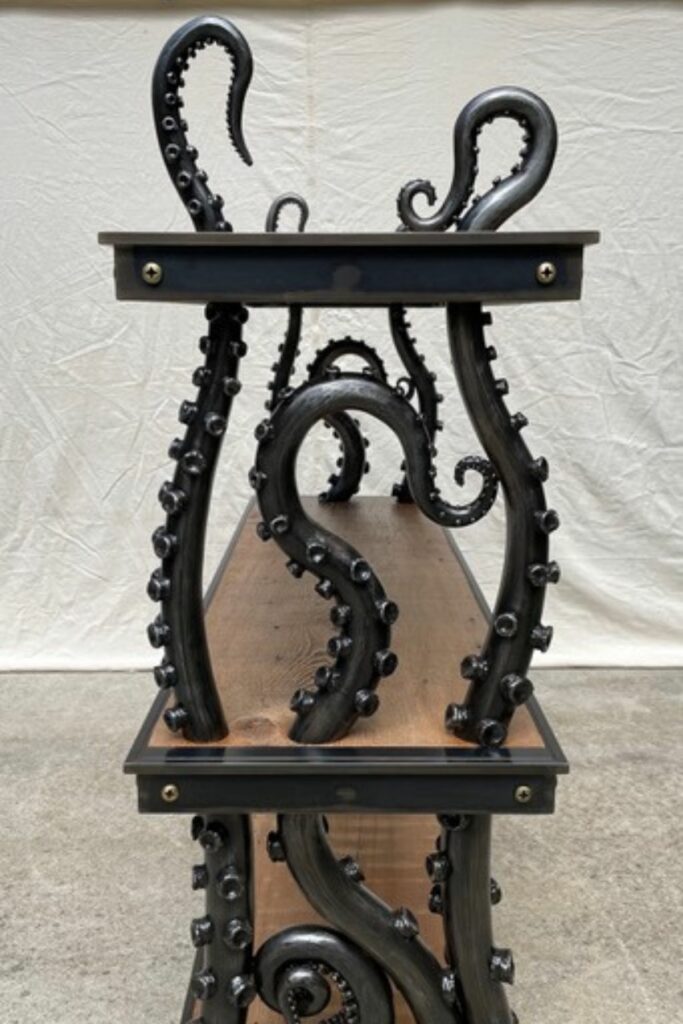
How do you know when a piece is finished?
“Another tough one to answer. It just has to feel like it satisfies the mental image I’ve had of it through the entire build. And, that there are no glaring errors (to me), or obvious flaws, like a weld I didn’t grind down or a curve that has a little flat spot where it shouldn’t be.”
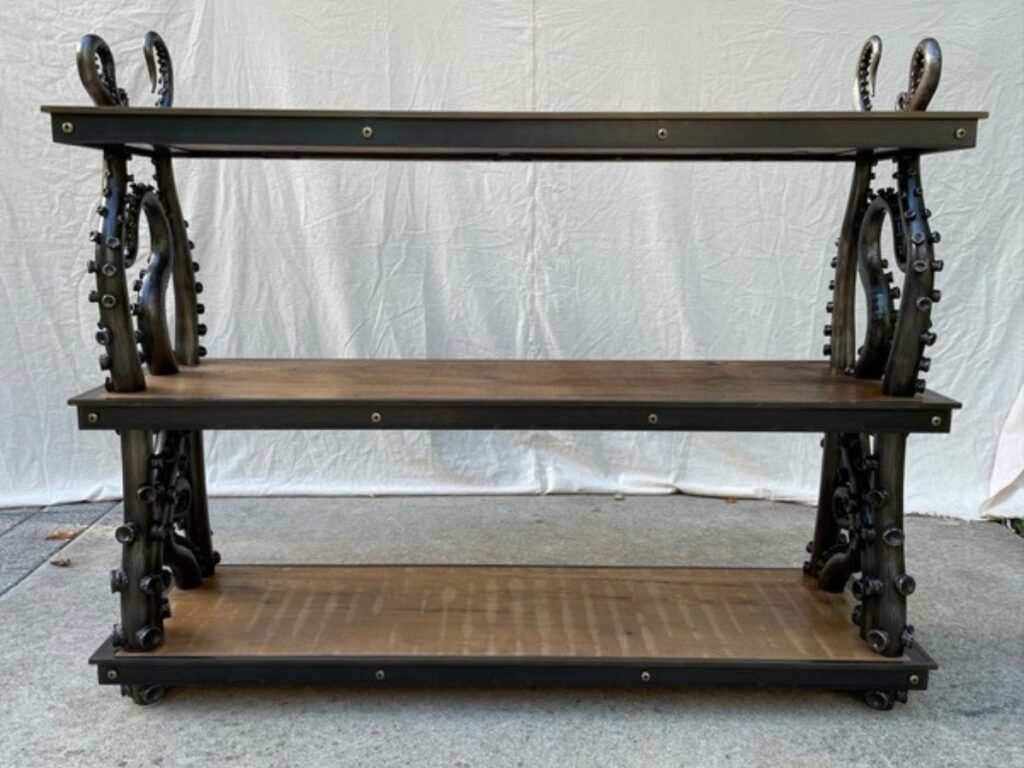
What’s the best website for people to discover your work?
“You can check me out on my website!”
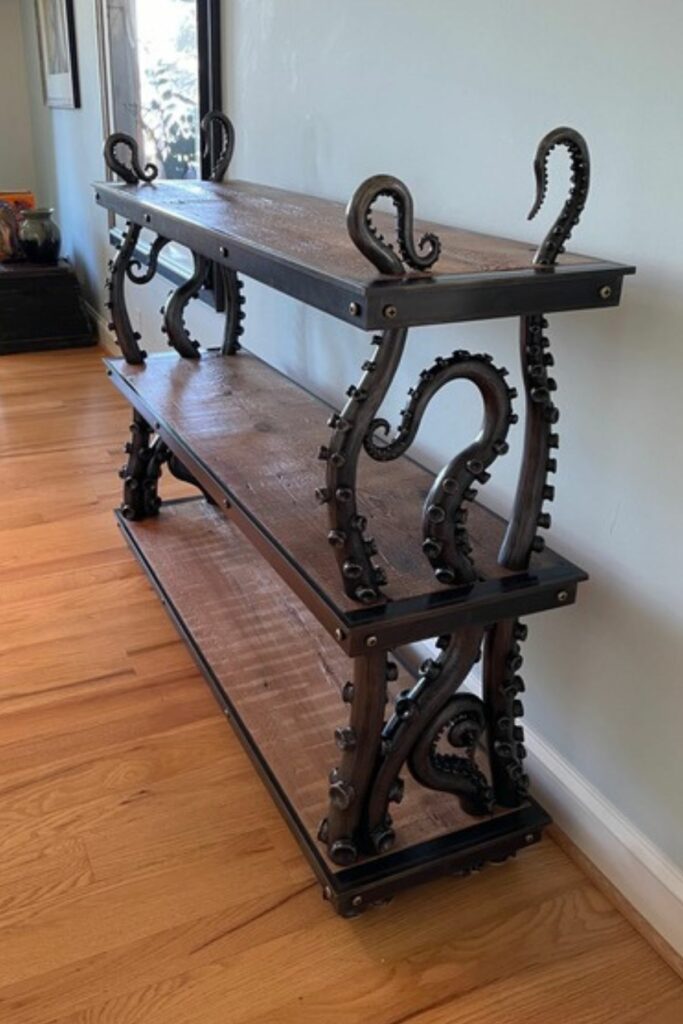
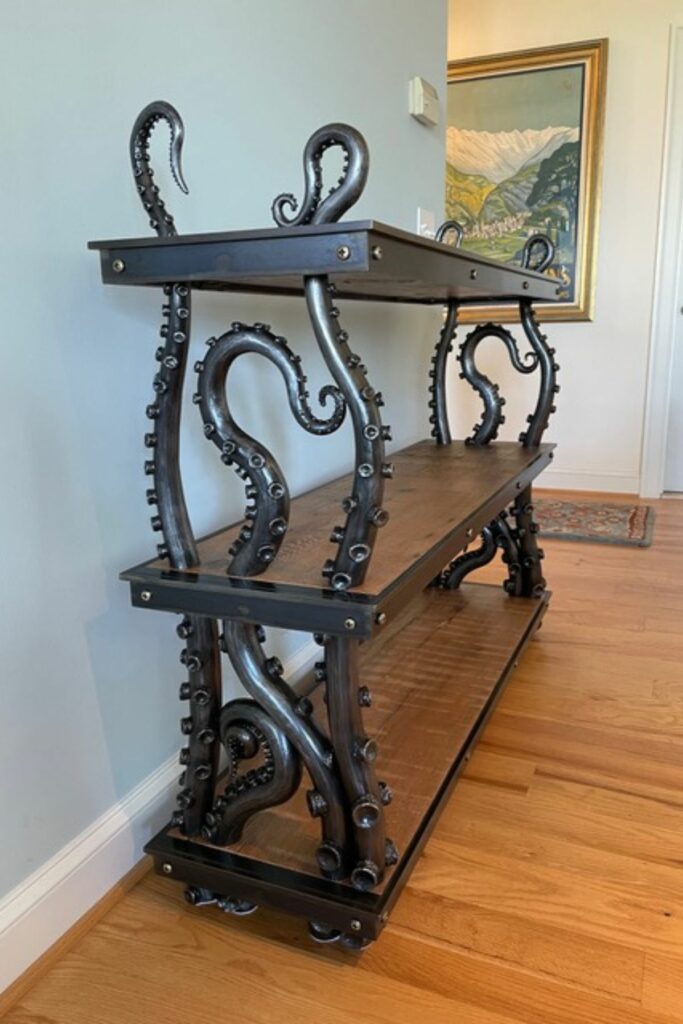
Do you have an artist statement?
“I work in fabricated metal.
I draw inspiration from nature, pop culture, or simply a found metal part.
Most of my work is representational, taking the form of animals.
I spent a long time working on building my skills and technique without too much concern about the content.
Lately that pursuit has led me to creating sculpture that looks cast, but has been produced through welding and grinding.
The difference in working directly in the steel versus clay is the limits the steel puts on me. Those limits often become paths to a solution I wouldn’t have originally intended, but make the piece far more appealing.”
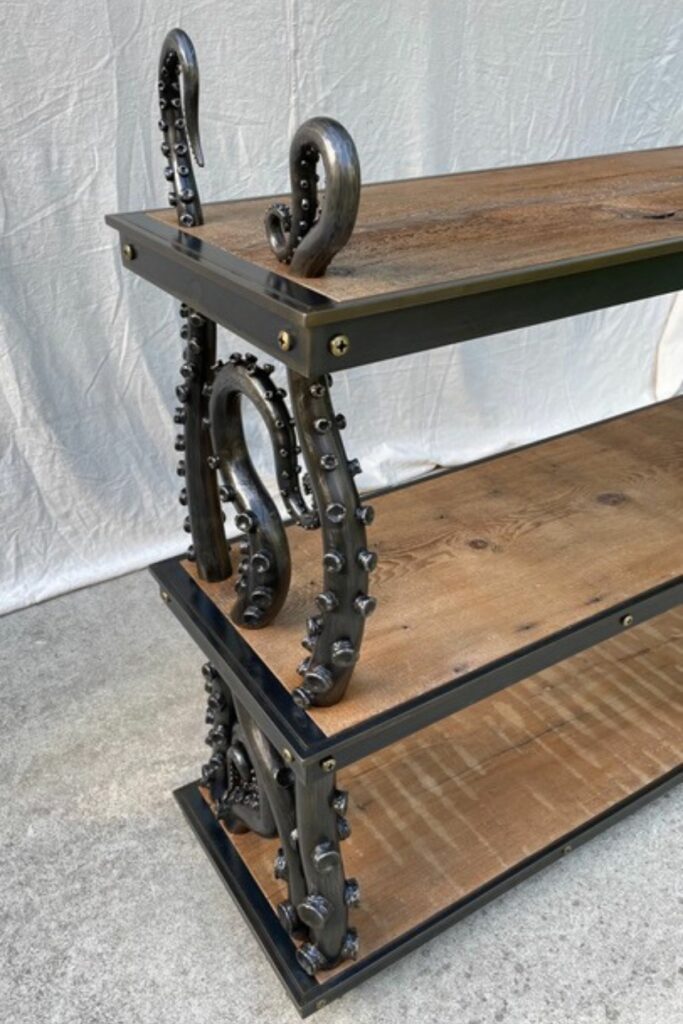
🐙 Octopus Fun Fact
“My wife and I are working on a new venture, creating a wide assortment of pieces drawing from the massive amounts of materials we’ve collected over the years. Ideas we currently are exploring include:
– prints
– furniture
– sculpture
– home decorWe’re going into it very open minded~ Items are currently being produced and we’re looking to launch it sometime next year.”
Thank You For Joining Us For Artist Spotlight!
First, we want to give a big thank you to Karl Saar for allowing us to showcase this beautiful piece of octopus furniture on OctoNation. To continue supporting Karl and his welding, make sure to follow them on Instagram @kustomsteel. If you have any interest in commissioning a piece from them, fill out this contact form.
If you want to educate yourself some more about all sorts of different cephalopods, take a look at our encyclopedia. Or, what we call it, our Octopedia!
Connect with other octopus lovers via the OctoNation Facebook group, OctopusFanClub.com! Make sure to follow us on Facebook and Instagram to keep up to date with the conservation, education, and ongoing research of cephalopods.
✨Click here to Adopt an Octopus!✨
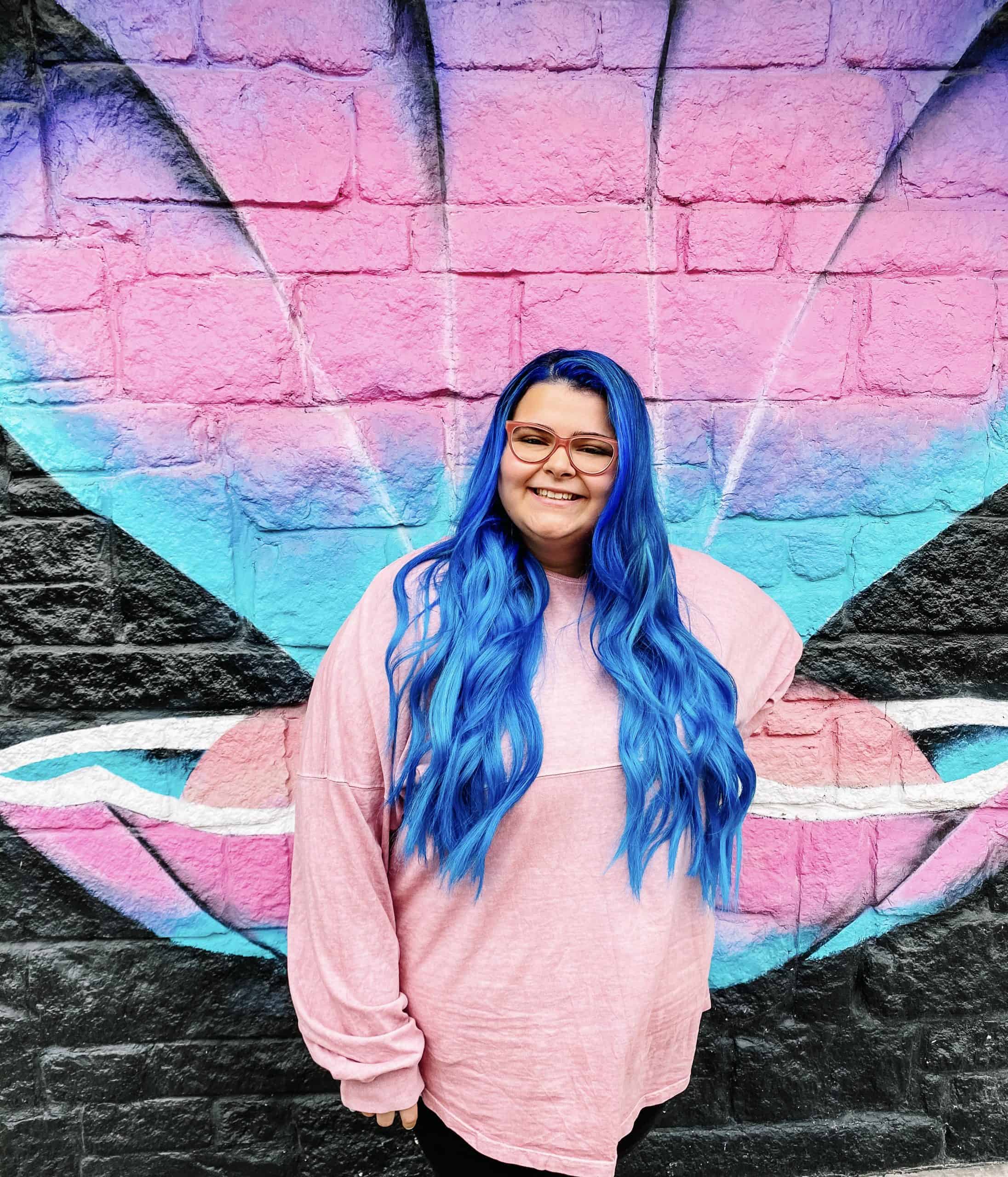
Vee is the blog manager here at OctoNation. Her love and knowledge for all things cephalopods has grown immensely since joining the OctoNation team- and continues to grow daily!
Vee uses her skills of writing, editing, and brainstorming to help create fun, yet educational posts about cephalopods- Something everyone can read and enjoy! As someone who spent the better part of her childhood near the ocean in Miami, Florida, she grew up learning to appreciate all sea life. Her love for the sea inspired her to do something daring- she dyed her hair blue!
